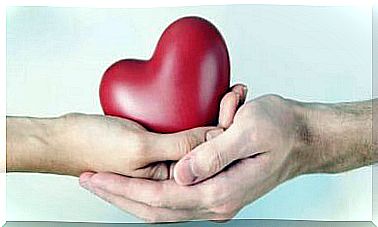Your Recovery Capacity Resides Within You

When our minds lead us into the inexplicable drift of anxiety, there is only one option left: to rebuild ourselves. It should also be remembered that each of us has a great capacity for recovery. Inside is this essential material to unite all the broken elements of self-esteem. In our heart is the beacon that will bring us back to balance.
When we speak of the concept of “recovery” as such, it can accommodate various assessments. However, as we speak of mental and emotional health, the issue seems to get more complicated. Let’s take an example. When someone breaks an arm, has the flu, or is recovering from surgery, no one has a hard time saying “ courage, get well quickly, get well ”.
But what happens when we are dealing with depression or an anxiety disorder? If you look in the dictionary, the definition of the term “recovery” is “back to health”. What then happens to those who do not pass through a viral or infectious disease or a fracture?
Beyond what we may believe, few challenges are as complicated to overcome as the one faced by all people with a mental health problem. Their injuries are not visible. They do not wear crutches and do not ask for sick leave.
Moreover, sometimes this healing process is not even initiated because people do not dare to ask for help. Or that they are unaware that this discomfort in reality hides a psychological disorder. So, as a study by the World Health Organization (WHO) found, nearly 50% of the population with emotional and mental problems never receives treatment.

Your capacity for recovery lies within you: the connection with the Self
Your capacity for recovery is within you, but you may not have discovered it yet. Because life sometimes hurts too much, and we are then plagued by fear and the feeling of being part of a Tower of Babel.
The first thing we need to understand about any recovery process is that coming back to the surface involves changes, setting in motion. We have no choice but to go beyond these confines where comfort is contained as well as many of these attachment relationships. Those which lead us to nourish vicious circles of suffering, anxiety and unhappiness.
DW Winnicott, a famous British psychiatrist and psychoanalyst used to say that the path to emotional healing is to reclaim our own human dignity to reconnect with the real self. Sometimes an inadequate internal dynamic sweeps us away and configures, in a way, a “false me”.
This idea is linked to the thesis of the humanist psychologist Carl Rogers. As he reminded us in his books and his approaches, we have to “update ourselves” constantly. He recommends that we put aside harmful or exhausting beliefs and states to awaken the full potential of our being. The one who lives in our interior in the form of seeds waiting to be treated to germinate …
Keys in the recovery process
Every path to recovery needs the right support. We are convinced that it is necessary to call on experts and professionals. We also know that it is always advisable to have people with us who can understand us. To provide us with encouragement, affection and understanding. On the one hand, then, there must be those who judge or who willfully do harm with their words.
In addition, it is necessary to fully understand a crucial aspect. Beyond this expert and facilitating environment, the recovery process depends only on ourselves. Of our courage, our efforts, our will.
So let’s see what are the keys to each path to recovery:
- ?? Find hope and a reason to move forward: people enter the therapeutic process because we hope to come out of it better than we did
- ?? Understand what is happening to you: first, before undertaking any type of intervention, it will be wise to devote your resources to knowing what you are facing (depression, anxiety, lack of social skills, etc.). If you don’t know your “enemy”, you can’t initiate a smart intervention.
- ?? Make a plan: Every recovery process requires a plan that you develop with conviction. Without including any room for adaptation
- ?? Reconnect with life in another way: a foundation of healthy habits will always be an invaluable help in any difficulty. Automation allows us to free up resources that we can devote to precisely this difficulty. We’re talking about starting other practices, meeting new people, leaving old routines aside.
- ?? Always strive to become a better person: as you feel better, it will be easier for you to value your abilities. You are going to find out how strong you can become.
In conclusion, we could say that this journey to recovery takes time. You will experience falls and setbacks, but every step you take backwards can also give you momentum. Because recovery is above all a journey of self-knowledge, allowing great lessons to be learned.










